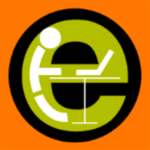Home » Articles posted by drannalcox
Author Archives: drannalcox
Addressing the Underrepresentation of Minoritized Ethnic Groups in Dementia Research: New Insights and Actionable Solutions
“But we, as Black people, are never told by GPs . . . or never told by hospitals . . . ”
Within the UK where Dementia is the leading cause of death, minoritized ethnic groups have a 20% higher risk of dementia, younger age of diagnosis, and die earlier after diagnosis compared with ethnically White groups, yet they are critically under-represented in research. Only 39.4% of clinical trials report participant ethnicity, and just 11.4% of UK participants come from non-white backgrounds. This significant under-representation limits the generalization of research findings, compromising effective dementia care and treatment development for all communities.
Our recent multiperspective study, published in Alzheimer’s & Dementia, provides critical insights from UK-based minoritized ethnic community members and international dementia researchers. We explored barriers to research participation and propose clear, culturally sensitive solutions to enhance inclusivity.
Key Barriers Identified:
- Community Members:
- Limited knowledge of dementia and research participation routes.
- Cultural stigma and fear around mental health conditions.
- Experiences of systemic racism eroding trust in health institutions.
- Researchers:
- Insufficient funding, time pressures, and lack of culturally tailored materials.
- Challenges engaging diverse communities through traditional recruitment methods.
Proposed Solutions:
- Culturally Tailored Recruitment Campaigns: Utilizing trusted community representatives, culturally sensitive language, and diverse offline and online communication channels.
- Community-Centered Research Programs: Engaging communities from initial study design to dissemination, fostering trust, relevance, and sustainable partnerships.
- Dedicated Funding and Training: Investing in resources, cultural competence training, and inclusive team-building to support equitable research practices.
By acting on these recommendations, researchers can actively dismantle barriers and build meaningful, inclusive research relationships, ultimately improving dementia care and outcomes for minoritized ethnic communities.
Read the full open-access paper here.
Marchant NL, Hossain E, Chen S, et al. A multiperspective investigation of the underrepresentation of minoritized ethnic participants in dementia research and proposed strategies to improve inclusive recruitment practices. Alzheimer’s Dement. 2025; 21:e70129. https://doi.org/10.1002/alz.70129
Measuring Immersion: The IEQ Explained
Are you interested in studying the psychology of gaming or immersive experiences? The Immersive Experience Questionnaire (IEQ) is an essential tool that can help you measure immersion—the psychological experience of being deeply engaged in a task, such as playing a video game. Whether you’re investigating what makes games so captivating or analyzing the factors that influence immersion, the IEQ provides a structured, validated approach to quantify this fascinating phenomenon.
What Is the IEQ?
The Immersive Experience Questionnaire (IEQ) is a tool designed to measure the degree of immersion an individual experiences during a particular activity, such as playing a game or using a virtual reality system. Immersion is assessed across five dimensions:
- Cognitive Involvement: The mental effort and focus dedicated to the activity.
- Real-World Dissociation: The extent to which an individual loses awareness of their surroundings.
- Challenge: How well the difficulty of the task matches the individual’s skills.
- Emotional Involvement: The level of emotional engagement with the activity.
- Control: How much autonomy and ease the individual feels during the activity.
The IEQ uses a combination of Likert-scale questions to measure these dimensions, offering a detailed picture of how immersive an experience was.
Resources to Get Started
To help you score and interpret the IEQ, we’ve prepared two resources:
- IEQ Scoring Guide: A document that explains how to calculate scores for each dimension of the IEQ.
- IEQ Scoring Spreadsheet: A pre-formatted spreadsheet where you can input participants’ responses and automatically calculate their scores.
These resources will save you time and ensure that your analysis is accurate and consistent.
How to Use the IEQ
- Administer the Questionnaire: Give the IEQ to participants after they have completed the immersive activity you’re studying. Ensure they understand the questions and the context in which they should respond.
- Collect Data: Make your own copy of the spreadsheet. Gather responses and enter them into the IEQ Scoring Spreadsheet.
- Score the Responses: Use the guide and spreadsheet to calculate scores for each dimension as well as an overall immersion score.
- Interpret the Results: Compare scores across participants or experimental conditions to uncover patterns or insights about immersion.
Jennett, C., Cox, A. L., Cairns, P., Dhoparee, S., Epps, A., Tijs, T., & Walton, A. (2008). Measuring and defining the experience of immersion in games. International journal of human-computer studies, 66(9), 641-661.
Designing personalized mental health interventions for anxiety
by Andreas Balaskas | Reblogged from https://htd.scss.tcd.ie/designing-personalized-mental-health-interventions-for-anxiety/
| We previously wrote a short blogpost about our paper that was published earlier this year. Andreas has written a much better one so we have reblogged it here |
Anxiety disorders affect approximately 264 million adults worldwide, leading to significant impacts on daily functioning, including avoidance behaviors, excessive worry, and fear. These disorders often begin early in life and, if left untreated, can result in long-lasting impairments in functioning. Cognitive-behavioral therapy (CBT) is a highly effective treatment for anxiety disorders, focusing on educating clients about the link between their thoughts, actions, and emotions and providing them with skills to break these connections.
CBT is typically delivered in clinical settings where therapists collaborate with clients to develop and practice skills, often using homework to reinforce the skills learned during therapy sessions in real-life situations. Recent technological advancements have expanded treatment accessibility through online platforms and mobile apps. Despite their potential benefits, many mental health apps are not optimized for clinical use and often fail to gain traction. High attrition rates and rare sustained use are significant challenges faced by these technologies.
One of the main reasons for disengagement from mental health apps is the lack of personalization and customization options. Current technology-based interventions are often not tailored to account for individual variability. Research indicates that mental health technologies could benefit from some human support from a coach or therapist to maintain engagement.

Therapists understand that treatment should be tailored to the unique context of each client, considering both the diagnosed disorder and the individual characteristics of the client. However, little is known about how CBT therapists’ input can be best integrated into the personalization of mobile technologies, how therapists view this possibility, and which features and content are worth shaping.
This paper, published in the International Journal of Human-Computer Studies explores CBT therapists’ perspectives on delivering tailored intervention content to users of mental health mobile technologies for anxiety management. Using interviews and ideation sessions, it uncovers current therapy practices and examines how tailoring can be offered at different treatment stages and what tailoring needs should be considered. Through this understanding, we seek to uncover a broader range of possibilities for designing personalized mobile applications for therapist-supported CBT.
The results showed that clients play a central role in shaping the content of therapeutic sessions and consequently affecting the delivery of intervention content through the use of apps. Therapists requested an active role in the personalization of such systems and requested a modular approach in which a dashboard is used to tailor the content of predefined modules based on different client characteristics. In contrast to existing technology-based systems for intervention delivery, effective personalization requires the modification of predefined modules. Our study shows that personalization strategies for the delivery of intervention content based only on the type of anxiety disorder (e.g. Generalised Anxiety Disorder) or severity of symptoms are inadequate for the design of highly personalized interventions and different user characteristics should be taken into consideration.
We highlight the different client characteristics that should be taken into consideration in the design of personalized technologies. Designing personalized digital interventions for anxiety disorders requires supporting flexibility and taking different individual characteristics into account.
The integration of personalized mobile CBT applications has the potential to revolutionize anxiety management by enhancing client engagement and support. By involving therapists in the tailoring of treatment and developing technology-enabled services, we can create sustainable, effective, and personalized mental health interventions that extend the reach and impact of traditional therapy. As we continue to explore and innovate in this field, the ultimate goal remains to provide clients with the best possible support for managing their anxiety, both within and beyond the therapy room.
Refer to this publication:
Balaskas, A., Schueller, S. M., Doherty, K., Cox, A. L., & Doherty, G. (2024). Designing personalized mental health interventions for anxiety: CBT therapists’ perspective. International Journal of Human-Computer Studies, 103319.
Anna will be giving a keynote at Mensch & Computer 24
Find out more about the conference at https://muc2024.mensch-und-computer.de/en/

Designing personalized mental health interventions for anxiety: CBT therapists’ perspective
We recently had a new paper accepted for publication. This is the fifth and final study from Andreas Balaskas PhD research and was part of a collaboration with Gavin Doherty from Trinity College Dublin, Devin Doherty from University College Dublin and Stephen Schueller from University of California Irvine. The paper is available open access in the International Journal of Human-Computer Studies! 🎉
In this study, we explore CBT therapists’ work and gain their perspectives on designing personalized mental health interventions for anxiety disorders that would be used between face-to-face sessions.
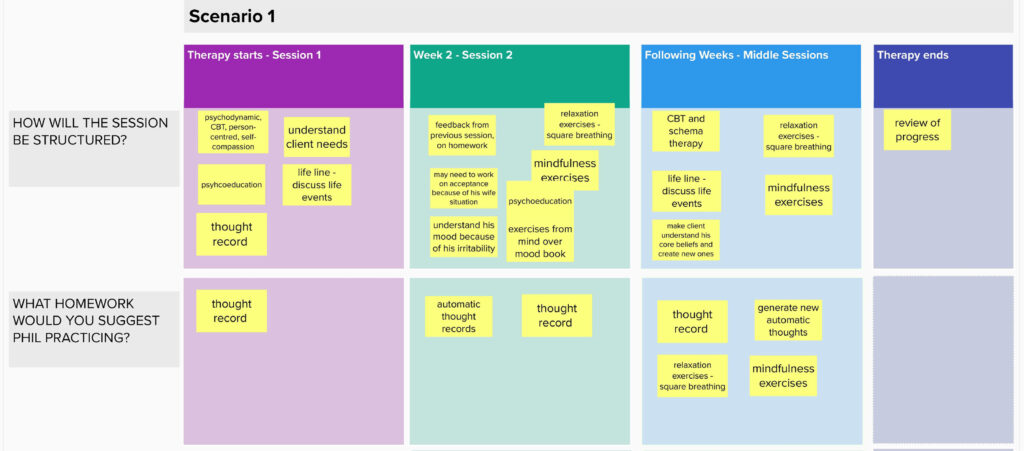
Through semi-structured interviews and ideation activities, we identified key characteristics for personalizing mobile apps that can be used alongside therapy. This research offers valuable insights for designers of personalized mental health technologies.
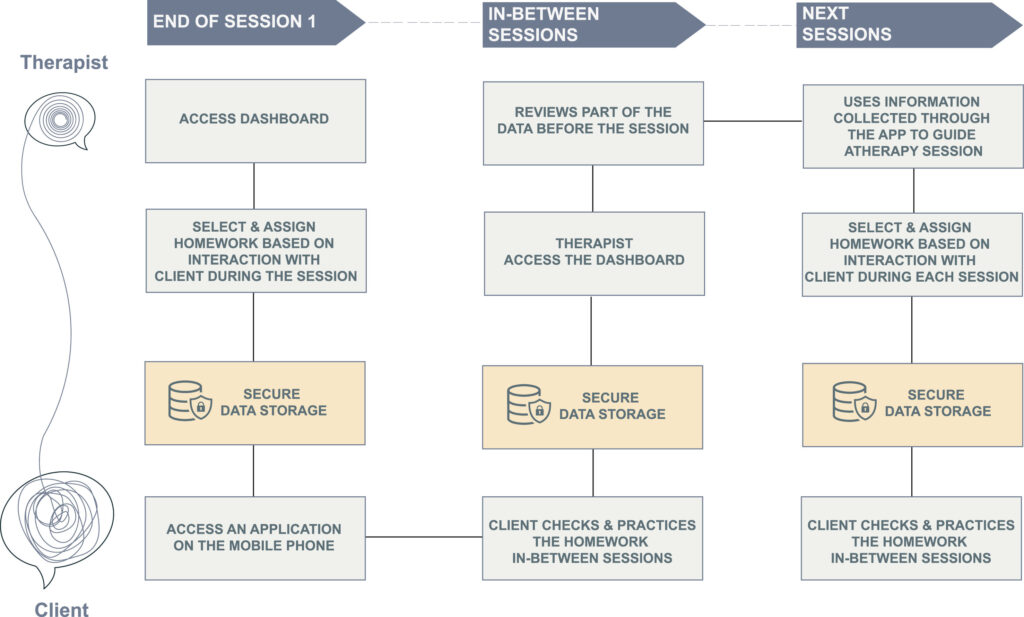
Highlights
- We present CBT therapists’ perspectives on the design of digital mental health interventions.
- We present a range of tailoring characteristics for the personalization of apps to be used in-between therapy sessions.
- We provide takeaways for designers of personalized mental health mobile applications.
CHIWORK’24 Experience by Yoana Ahmetoglu
CHIWORK is an annual symposium focused on how HCI will support future work. This year, the CHIWORK’24 symposium was hosted by the University of Northumbria in the charming city of Newcastle-Upon-Tyne. There are quite a few cool-looking bridges over the river and across the city

I arrived in Newcastle with an early train from London and enjoyed the beautiful English countryside. Pro tip: the view of Durham Castle from the train is stunning and worth every second of window-gazing. Unfortunately, I did not manage to capture it as I was absorbed by the view but here is a photo from the web. It was a great train ride.

The first event was the student’s consortium where twelve students talked about their research experience, interests and got feedback and advice from mentors, such as Advait Sarkar from Microsoft, Andrew Kun from University of New Hampshire, Carine Lallemand from University of Luxemburg, and others. We presented posters to all attendees of the conferences and got to know each other better. Here is me talking about the studies I’ve conducted during my PhD.

What set this consortium apart was its inclusivity. Unlike typical events focusing solely on doctoral students, this one welcomed student from all levels. I met Audrey Chang from Harvard, an undergraduate student interested in democratizing knowledge who gave me great feedback on my own ideas. Interacting with students from all levels must surely be great for fostering research creativity.
In my talk during the consortium, I reflected on my doctoral journey, now in its fourth and final year, and raised questions about the skills to develop considering the recent AI boom. Horia Maior encouraged me to embrace my unique interdisciplinary expertise and rely on my broad skill set, which, while not easily labeled, allows me to identify and explore HCI research questions. This encouragement made me feel accepted and reassured me. Even if all I got out of the conference was this feeling, it would have been worth it. However, I gained so much more.

During discussions with mentors, I had a brief conversation with Carine Lallemand (in the photo above), who questioned the specific user experience I am designing for. These discussions were among the first to address a common theme: what does it mean to design for worker-centric productivity? Throughout the conference, I was pleasantly surprised to find a consensus on the importance of focusing on wellbeing at work. This includes considering health, work-life balance, and overall job satisfaction as crucial elements of productivity. Realizing that the “HCI for work” community strongly prioritizes these values made me feel a strong sense of belonging to this community.
The first day was followed by an opening key-note speech and a conversations panel, providing a great mix of experiences. My research presentation was during the second day. In our paper, we studied the functionalities which are useful for supporting users of to-do list apps to make more realistic plans. You can read more about this study here.

I thoroughly enjoyed giving the talk and engaging with the questions that followed. It was encouraging to hear from attendees who shared that they enjoyed the presentation. That’s another great thing about attending and presenting at conferences – you get to feel appreciated and valued by the broader community.
During the breaks, we shared lunch and coffees, and presented posters about our doctoral research. The size of the conference was just right to be able to get to know most people well enough (50 attendees).

One of the interesting presentations of the day was about “Trinity: A Design Fiction to Unravel the Present and Future Tensions in Professional Informatics and Awareness Support Tools” by Carine Lallemand and her co-authors. This study introduces Serenity, Affinity, and Capacity—three AI-driven tools. Serenity is like your personal wellbeing coach, monitoring stress and heart rates to keep you zen. Affinity acts as the ultimate team therapist, tracking moods and engagement to ensure everyone is on the same page. Capacity, the productivity guru, keeps tabs on project progress and potential risks, like a bossy but helpful project manager. The narrative humorously shows scenarios where these tools blend into daily work, making us really think (and often laugh) about the tech-driven future of collaboration.
Another interesting study was “Non-Expert Programmers in the Generative AI Future” by Molly Feldman and Carolyn Anderson. This study looks at how AI tools that turn natural language into code can help people who aren’t trained programmers. They studied non-programmers and found that while these tools are promising, beginners struggle with technical language and understanding the code that AI generates. The study also showed that regular computer science classes don’t fully prepare students to use these AI tools. The authors suggest focusing on teaching “code-building” skills, so more people can use AI to create and tweak code easily, making programming more accessible for everyone.
I had several chats with Molly, the author of the paper, who is a kind-hearted and warm person. She gave me useful advice on how to start getting myself educated in LLMs, for example, by learning the terminologies (as opposed to the tech side of things) and by taking a course specifically dedicated to LLMs that may be introduced in the coming fall term. I came out of the conference feeling prepared with more specific long-term goals.

The conference concluded with a town hall where all attendees got a chance to express their ideas about the future of the conference itself, reinforcing the sense of inclusivity. We also got to learn about how the conference came about, and after the closing key-note speech, we found out where next year’s conference will be and how to get involved in helping organize it.
CHIWORK’24 was a great experience, filled with inspiring talks, meaningful connections, and plenty of laughs. I left Newcastle feeling motivated, valued, and ready to dive back into my research with fresh ideas and perspectives. ‘Till next year in Amsterdam!
CHIWORK 2024 trip – a blog post by Shiping Chen
This year, I attended CHIWORK 2024 at Northumbria University in Newcastle from June 25 to June 27 2024+.. As my first in-person conference, it turned out to be an incredibly rewarding and unforgettable experience for me.
Discovering Newcastle: My First Visit
To prepare for the full conference program, I arrived in Newcastle a day early and had the chance to explore its beautiful scenery. From the moment I arrived, the city’s unique blend of historical charm and modern vibrancy captivated me. The stunning architecture of landmarks like the Tyne Bridge and the beautifully preserved Georgian and Victorian buildings added a distinctive character to the cityscape. The Quayside, with its lively atmosphere and picturesque views of the Sage Gateshead and Millennium Bridge, quickly became one of my favourite spots. Wandering through the streets and capturing these sights in photographs, I felt a genuine connection to the city’s rich history and culture. Spending the evening in the city heightened my anticipation for the upcoming conference events.
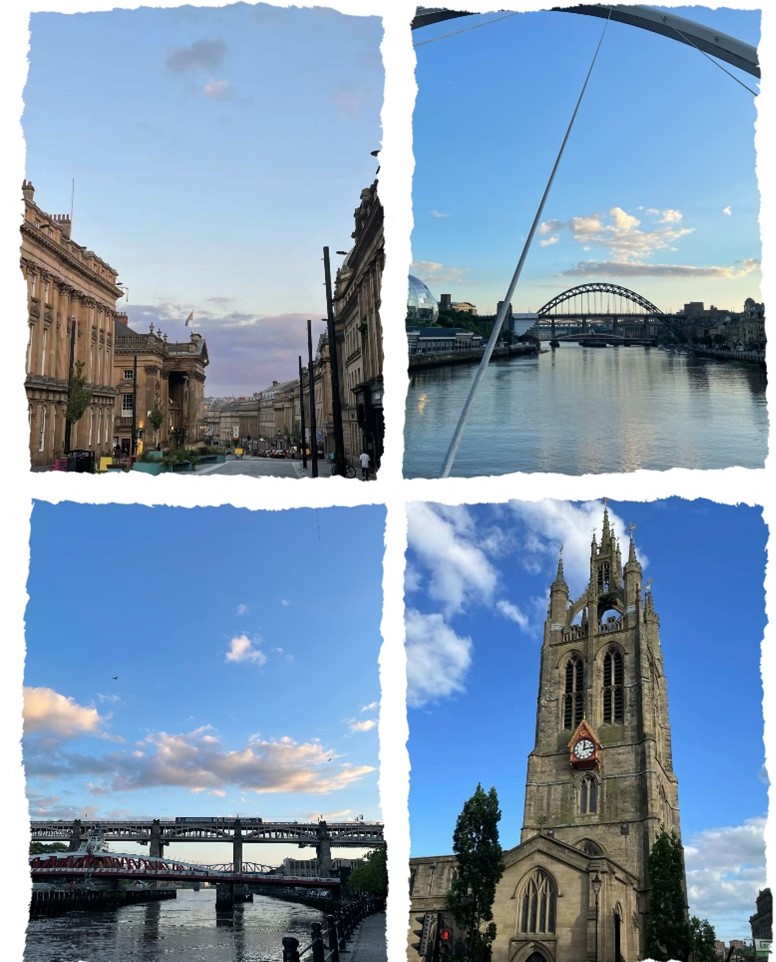
Figure1. Photos I took on my first day in Newcastle.
Student Consortium: A fantastic opportunity to kick off the conference and network with other early career researchers
The first event I participated in CHIWORK was the student consortium, which took place on June 25 from 9:00 to 12:30. It was a great opportunity to meet other PhD students from all over the world and discuss each other’s research for peer feedback. I appreciated the well-organized activities during the Student Consortium, which included self-introductions, group discussions, one-on-one feedback session, and fireside chat with mentors. These activities made it easy for us to get to know each other and start conversations. The groups were divided based on research topics, facilitating the exchange of constructive feedback and ensuring that everyone could both provide and receive valuable insights.
I was part of the group focused on Innovative AI Applications and Assessment with three peers: Ruotong Wang from the University of Washington, who focuses on designing socially grounded AI applications to support team communication in remote work settings such as Zoom meetings and Slack chats; Teshan Bunwaree from Cardiff University, who works on the multidisciplinary assessment of bossware, aiming to provide recommendations for bossware technology in the workplace by integrating knowledge from law, organizational psychology, and technology; and Pranjal Jain from Swansea University, who researches capturing tacit knowledge, primarily through reflective technologies that enable digital systems to record and analyse experts’ decision-making processes.
During our discussions, we shared our research experiences and skills in conducting user studies. We also talked about the journey of a PhD student in different countries. I found these conversations very interesting and rewarding. Hearing about the diverse approaches and challenges my peers faced at their respective institutions broadened my perspective. We were also fortunate to be joined by two mentors, Dr. Advait Sarkar from Microsoft Research and Prof. Andrew Kun from University of New Hampshire. The exchange of ideas and methodologies with them helped me refine my current project. I gained valuable insights from their suggestions, particularly on how to utilize current AI models to build AI tools. Advait mentioned their paper about participatory prompting, which I will describe in more detail in the next section. This advice was especially relevant to my own PhD project, during which I plan to design a generative AI tool to help people review papers more effectively.
I also enjoyed my one-on-one chat with Ciabhan Connelly and the fireside chat with all the mentors. Ciabhan, from Georgia Tech, studies how to mitigate the spread of misinformation and hateful ideologies in online communities, particularly misogynistic ones. We talked about our studies in turn, and then discussed potential solutions and the mixed methods we use in our research. The fireside chat with all the mentors provided a wonderful closure to the Student Consortium. The fireside chat offered us the chance to ask questions and gain valuable advice from experts in both academia and industry. I found the advice on choosing between an academic or industry career and tips for finding academic positions particularly helpful to me. Additionally, learning about the differences in recruitment timing, reference letters, and language requirements between the US, UK, and Europe was incredibly informative.

Figure 2. Photo taken at the end of the Student Consortium. My supervisor, Prof. Duncan Brumby (centre of the picture), was one of the organisers of the CHIWORK 2024 Student Consortium. A heartfelt thank you to Duncan and all the organisers for such a fantastic event!
Panel and paper sessions: diverse topics on how we can better work
The Student Consortium was a delightful appetizer, and the subsequent panel and paper sessions were a sumptuous feast. CHIWORK 2024 featured six paper sessions, each offering diverse perspectives on work research: ‘AI & Wellbeing at Work,’ ‘Inclusive and Accessible HCI,’ ‘Future of Collaborative Work with(out) AI,’ ‘Task, Time, and Stress Management,’ ‘AI in Professional Growth & Workplace Support,’ and ‘Service Sector & Job Market Dynamics.’
I thoroughly enjoyed all the paper presentations; they were high-quality and engaging. I paid particular attention to the papers involving AI, as my own research focuses on generative AI in peer review work. One of my favourite examples was Feldman and Anderson’s (2024) “Non-Expert Programmers in the Generative AI Future,” which identified several barriers to effective use of Code LLMs, such as challenges in technical communication and prompt formulation. Another standout was Drosos et al.’s (2024) “It’s like a rubber duck that talks back: Understanding Generative AI-Assisted Data Analysis Workflows through a Participatory Prompting Study.” which explored the integration of generative AI tools into data analysis workflows, particularly for non-expert end-users. It highlighted how generative AI can streamline information foraging and sensemaking loops, underscoring its potential to support data analysis while also pointing out the need for better-designed prompts and strategies to mitigate the identified barriers. These papers gave me some inspiration on my own research topic: conducting user studies to investigate and evaluate how well a review supportive tool can help reviewers and rethink review workflows in the age of AI.
I also enjoyed my dear friend, Yoana Ahmetoglu’s presentation in the “Task, Time, and Stress Management’ paper session. Yoana’s work looked at how task management apps can incorporate strategies to mitigate the planning fallacy, a cognitive bias leading to underestimating task completion times. It informs the design of more effective task management tools that bridge the gap between psychological insights and practical application (Ahmetoglu, Brumby, & Cox, 2024)
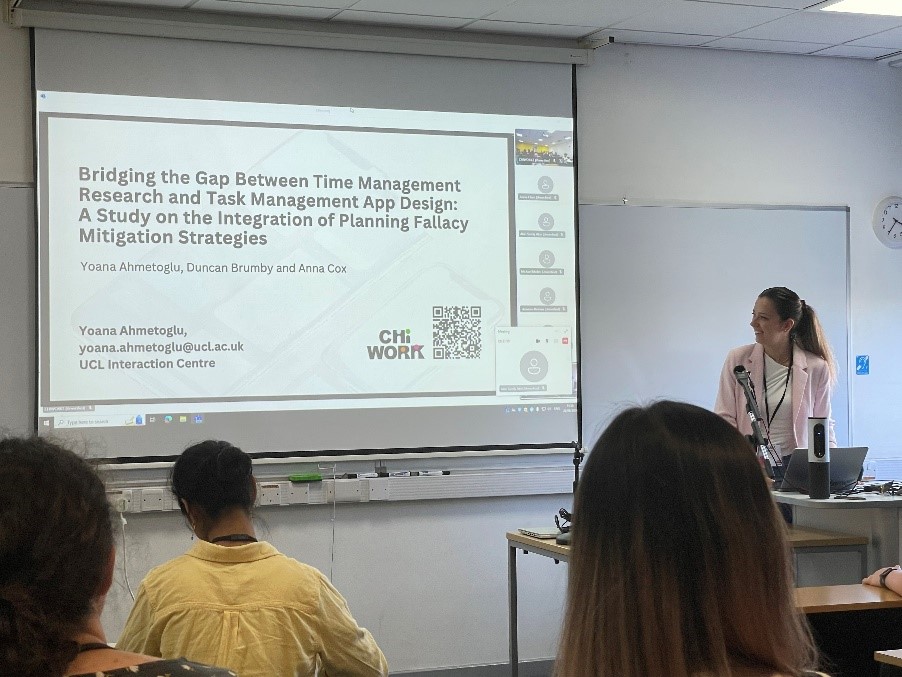
Figure 3. Yoana presenting her paper.
Interspersed among the paper sessions were poster and demo sessions, where I had the opportunity to present my poster on my PhD project titled “How to Alleviate the Peer Review Crisis: Exploring Future Designs and Supporting Tools to Improve the Quality and Efficiency of Academic Peer Review.” I engaged in conversations with attendees about the expected outcomes of my research, my proposed solutions for enhancing academic peer review, and we exchanged ideas on whether designing AI tools for peer review is a viable and beneficial approach.
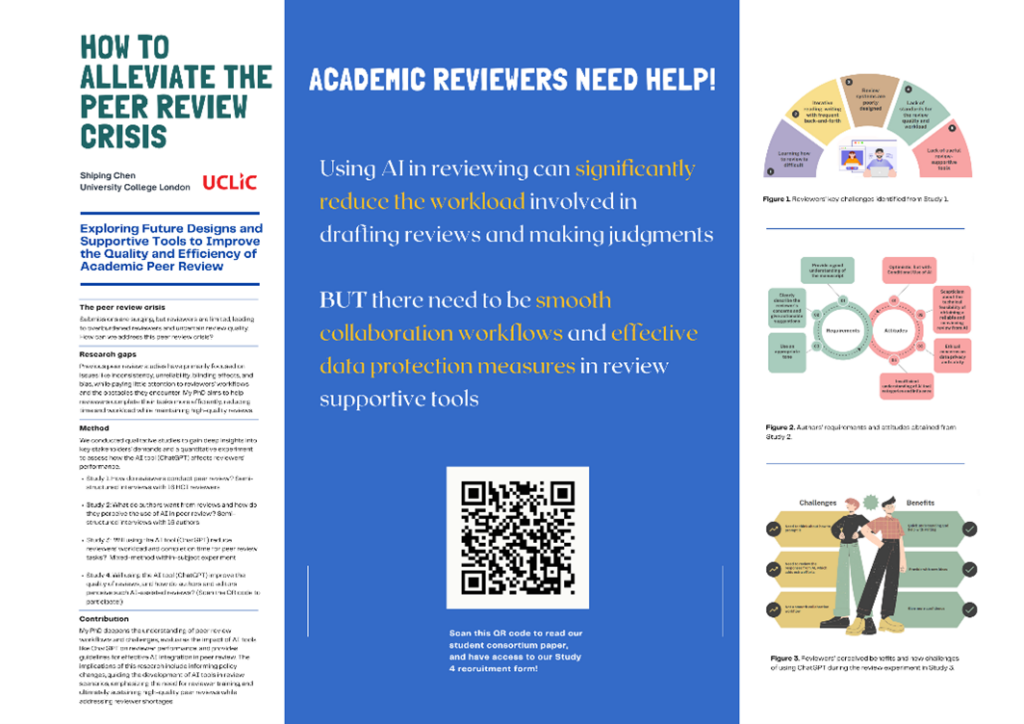
Figure 4. The digital version of my poster presented in CHIWORK 2024.
The panel sessions during the conference were also very insightful. We had a conversational panel at the first day, where my supervisors Duncan and Anna talked about the ChatTL;DR to get people to check the output of LLMs. We then had the Town hall at the last day, where the CHIWORK 2024 general chairs, Dr. Marta Cecchinato and Dr. Marios Constantinides, concluded this year’s conference. We also participated in a ‘co-writing’ session with the steering committee. Using a Miro whiteboard, everyone had the opportunity to contribute to the community values, express their ideas, and provide suggestions, further enhancing our sense of engagement and connection.

Figure 5. Photo taken during my secondary supervisor Prof. Anna Cox’ speech.
Finally, the closing keynote left a lasting impression. CHIWORK 2024 ended with the closing keynote, “The Future of Work: Can Workplace HCI Save (Us from) Generative AI?” delivered by Dr. Jackie O’Neill from Microsoft Research Africa. She presented research on designing worker-centric generative AI tools for gig knowledge workers. I particularly appreciated her discussion on the importance of designing AI systems as collaborators rather than competitors to humans. She emphasized the need to create interfaces and workflows that facilitate seamless human-AI interaction, ensuring that AI tools enhance collective intelligence within teams rather than isolating users from meaningful engagement with their work.
Feel engaged, Feel connected
Overall, my CHIWORK trip was fulfilling. The diverse and open exchanges during the conference truly made me feel engaged and connected. Daily coffee breaks and lunch conversations at the venue, as well as pub chats and dinners after the paper sessions, provided a relaxed environment for us to get to know each other better.
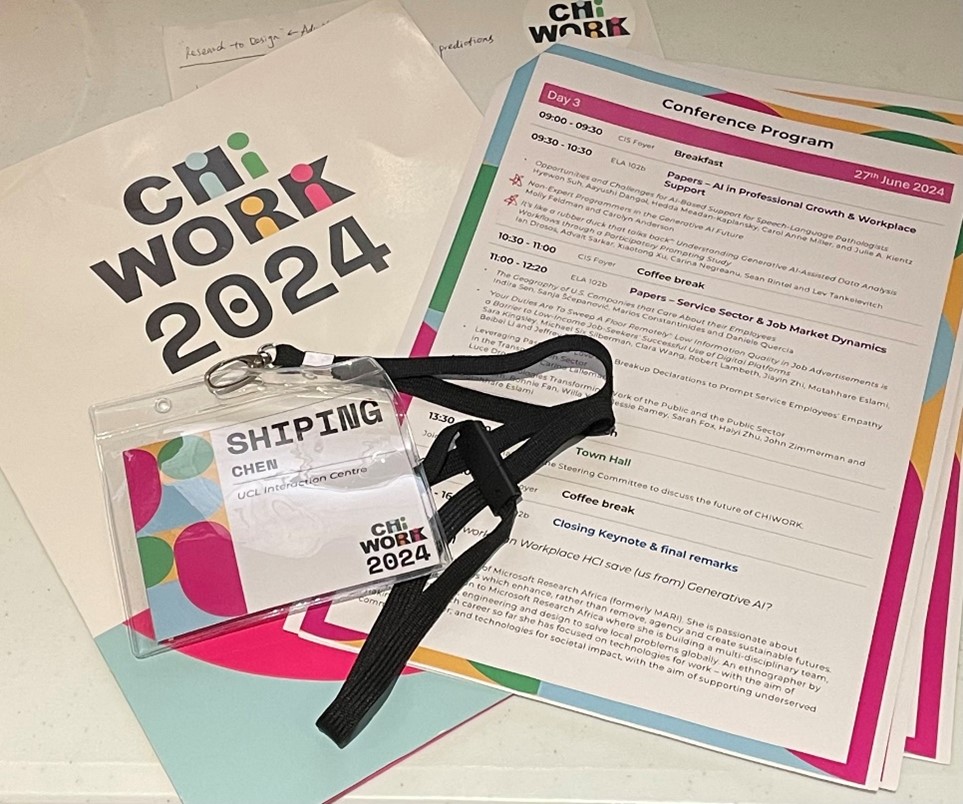
Figure 6. The beautifully designed conference agenda, note papers, and participant card for CHIWORK 2024 serve as memorable keepsakes from my in-person conference experience.
As a PhD student, CHIWORK made me feel fully involved, providing a fun, informative, and enjoyable experience. This wouldn’t have been possible without the hard work of the organisers and volunteers. Thank you all! I look forward to meeting again next year in Amsterdam!-
Attending CHIWORK 2024 – By Qing (Nancy) Xia
The 2024 CHIWORK conference took place last week at Northumbria University, up in Newcastle, and offered a great selection of interesting papers and discussions regarding the future of work.
This year, there were several papers which explored the topic of supporting workers not just in improving their productivity, but also considering factors such as ensuring workers’ autonomy and rights in the age of AI and worker wellbeing. In particular, I really enjoyed the exploratory work presented by Sowmya Somanath on designing technologies to support worker happiness and long-term satisfaction – an ongoing programme of work which I’m excited to follow. Yoana Ahmetoglu, one of my peers and good friend, also delivered an engaging talk on her paper regarding how time management apps could be better designed to reflect key strategies for supporting planning.
CHIWORK also offered a great platform for more exploratory research and reflections that inspired great discussions in the community. Several papers this year adopted a design fiction approach to explore different outlooks and possibilities of introducing AI in the workplace. Some of my favourite examples included Carine Lallemand et al.’s (2024)‘Trinity’, a thought-provoking fiction, imaginatively and immersively presented, in a future where every aspect of our individual and collaborative performances could be quantified and captured by AI, and the paper presented by Michael Muller et al. (2024), which raised important questions about the right of refusal when workers collaborate with organisational AI tools, and what our future may look like if human labour could be quantified and processed by AI just like any other piece of data. Beyond speculating about the future, there were also examples of new research methodologies for understanding human-AI interactions, such as the participatory prompting framework used by Ian Drosos et al. in their paper this year as well.
CHIWORK also included two interesting sessions that I particularly enjoyed. The first session was the Conversations panel, which involved two of my supervisors Professor Duncan Brumby and Professor Anna Cox presenting their alt.CHI work about the current state of academia and the place of AI within it. As a student, it was enlightening and interesting to observe how individuals within the community navigated their differing opinions on this topic and engaged in the debate. The second session was the Town Hall, which brought in-person and online participants together on a Miro board to brainstorm suggestions and ideas for future CHIWORK sessions. It was an interesting insight into understanding the ‘behind-the-scenes’ works of what defines a research community and how it all comes together.
Most exciting for me, as a PhD student, was getting the chance to meet and connect with fellow researchers and students who also worked in my field of interest – namely, the topic of user learning and expertise in the software. Meeting and chatting with Pranjal Jainand Molly Feldman and learning about their work really inspired me to reflect on my research ideas and approach in tackling my future PhD studies. There was also an impromptu opportunity to hop in and contribute to the conference itself – I ended up chairing the second session on ‘Inclusive and Accessible HCI’ on Wednesday, which was great for supporting my public speaking skills despite my initial nerves.
All in all, the conference organisers Marios Constantinides and Marta Cecchinato did a great job in getting the event together. I left CHIWORK this year inspired and excited to come back to Amsterdam for the next session in 2025!
My Work Experience at University College London Interaction Centre (UCLIC)
By Hywel Jenkins
During my five-day work experience at the University College London Interaction Centre, I had the opportunity to engage deeply with the realms of science communication, research inclusivity, and the integration of artificial intelligence in academic and professional settings. My work experience supervisor was Prof. Anna Cox. This post discusses my daily experiences, covering the activities I completed, the knowledge I gained, and the challenges I faced.
Day 1: Introduction and Exploration

On the first morning, I completed a brief tour of the UCL campus and the UCLIC office, which included a fire safety induction. This tour was not just to help me with orientation; it also provided a historical context, as I visited Jeremy Bentham, the founder of UCL. Learning about Bentham’s contributions set the stage for understanding UCL’s long-standing commitment to progressive education and research. Later in the morning, I watched several YouTube videos on science communication. These videos were important for laying the groundwork for my week’s projects, as they introduced me to the fundamentals of creating effective science communication artefacts. Initially, I felt nervous at the sheer volume of information and the tasks ahead, but this session helped mitigate some of my stress by providing a clear framework for approaching my assignments.
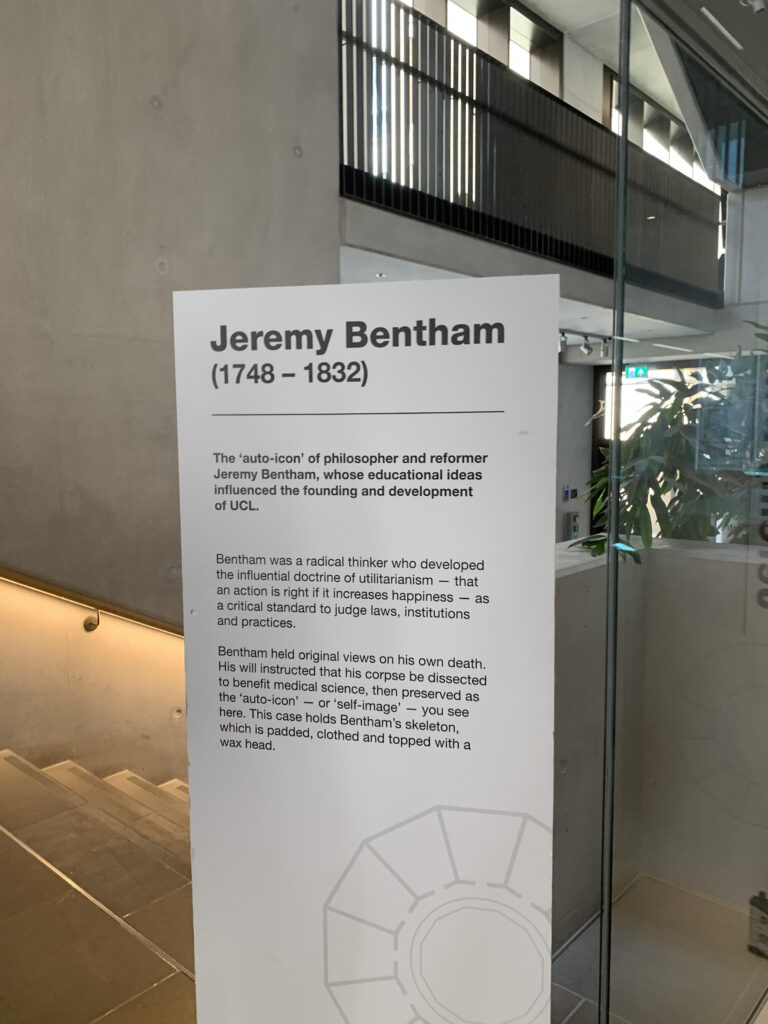
In the afternoon, I attended an event at the Equalities Research Centre, which focused on making research more equitable and inclusive. The session was interesting as it showcased the various initiatives within UCL’s brain sciences faculty aimed at fostering inclusivity. One thing I learned from this was the different impacts of various types of dementia on brain functions, such as memory and language skills.
Day 2: Blog Post Creation and Workshop Attendance
The second day began with downloading and reviewing the work of master’s students, which I would later feature in a promotional blog post for my Work Experience Supervisor. This task was both educational and demanding. I delved into diverse topics, including the effective use of large language models (LLMs) through prompt engineering, the benefits and challenges of the gig economy, and the integration of AI in the workplace. Furthermore, I attended a meeting with Yoana, one of my work experience supervisor’s PhD students, to gain deeper insights into her project. This meeting was important as I learned valuable information in it which I needed for my upcoming tasks.
In the afternoon, Anna had to assist with a workplace workshop, and I joined, observing from the back of the room. During this time, I utilised AI tools like ChatGPT to draft the promotional blog post. This experience was particularly beneficial as it demonstrated how AI can streamline the creative process and enhance productivity. However, staying focused amidst the ongoing workshop was a bit challenging due to the long time period that it went on for.
Day 3: Finalising Blog Post and Starting Information Page
On the third morning, I finished the blog post about the master’s students’ work. This task helped me to improve my skills in prompt engineering, and my overall skills in using AI tools for creating content. Following this, I attended a team meeting that offered further insights into the projects of Yoana and another PhD student, Shiping. The information I learned here was important for my second major project of the week.
In the afternoon, I began working on creating an information page for Anna’s website, which detailed the ongoing research projects within her research group. This involved finding information from different sources I had come across during the week, including my notes from meetings, posters, and research papers which Anna gave me. Later, I attended a seminar by a guest speaker from America (Prof Orit Shaer) who discussed the use of virtual reality (VR) for remote work. The seminar (which you can watch on YouTube here) highlighted the benefits of VR in enhancing focus, reducing stress, and improving convergent thinking in team settings. The day concluded with another exploration of the UCL campus, in order to go and see the previous homes of UCLIC within UCL.

Day 4: Continuing Projects and Starting Work Experience Report
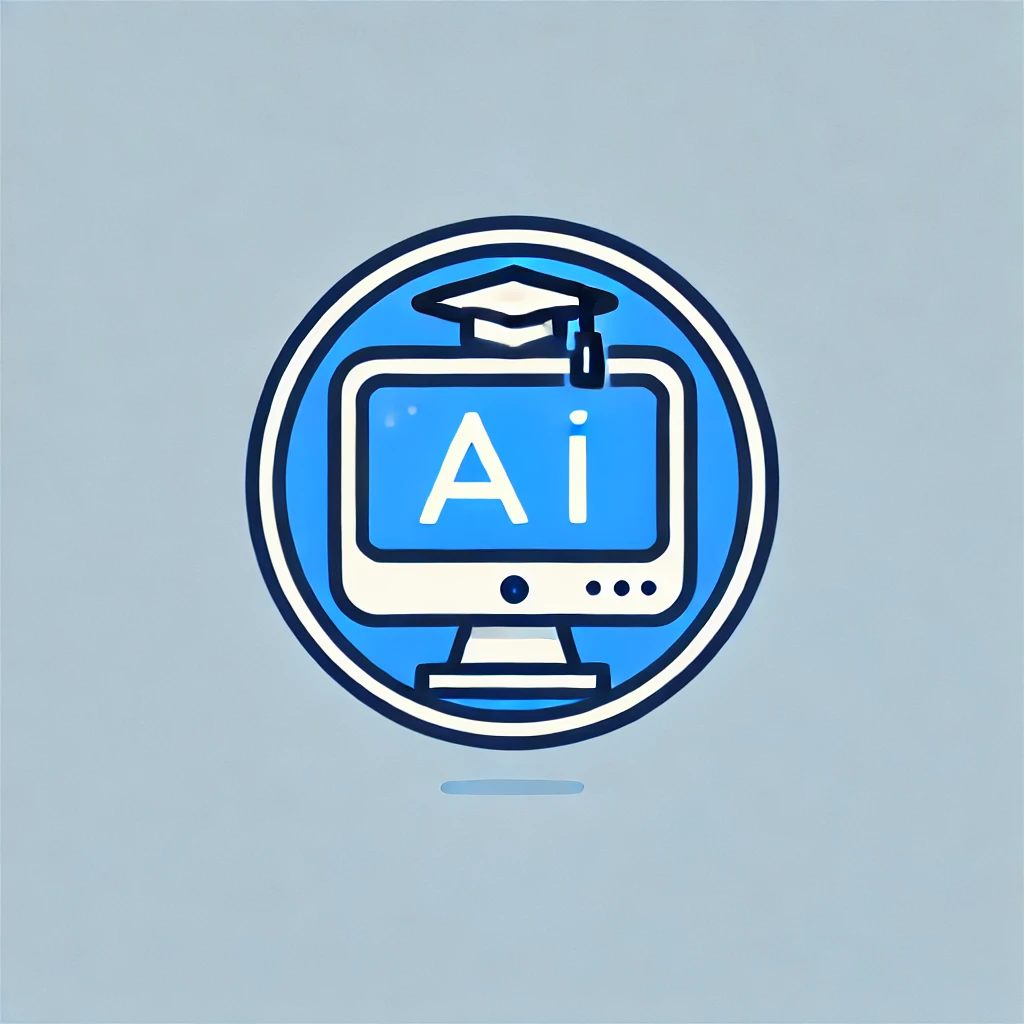
The fourth day was primarily focused on continuing and nearly completing the information page about my work experience supervisor’s research group, using AI to help me make the logo opposite for these projects. Working from home presented some concentration challenges, but I managed to stay focused and learned many things from the ongoing research projects in the research group, including about the Research compliance buddy being created and the research on the use of AI tools in academia.
In the afternoon, I began working on my final project, this report writing about my work experience experiences at UCLIC. This involved reflecting on the week’s activities and thinking about what I had learned this far into my week. I also continued to refine my skills in using AI tools to aid in report writing. Concentrating for extended periods without breaks was difficult, but I managed to push through and make most of the progress that I needed to on this task.
Day 5: Finishing my tasks off on the final day
My morning was primarily focused on completing the remainder of the tasks which I had left. I worked on feedback from my supervisor, learning how to write more engaging texts and how to more easily proofread my work, by using the text to speech feature in Microsoft word. Following this work, I began to work on some ideas for social media posts to act as an advertisement for a survey that my supervisor is running.
Following my lunch break, I continued to work on these twitter posts, trying to make the most eye-catching and interesting advertisements to try and draw in the target audience of UK academics, lecturers and PhD students, leveraging both LLMs for ideas and AI image creation models such as Dalle 3 to achieve this. Following this, Anna showed me how to add the different artefacts that I had created over the week to word press, the tools she uses to create her website so that my work could appear on the website.
Conclusion
My work experience at UCLIC was both enriching and insightful. It provided a comprehensive understanding of the intersection between science communication, research inclusivity, and AI integration as well as what life working at a university is really like. Despite initial nervousness and challenges due to my unfamiliar environment, I successfully completed my assigned tasks. This experience significantly enhanced my skills in using AI tools, understanding inclusive research practices, and effectively communicating scientific ideas. It has been a pivotal experience that has contributed greatly to my personal and professional growth, helping me to better consider my career and educational decisions for the future.

